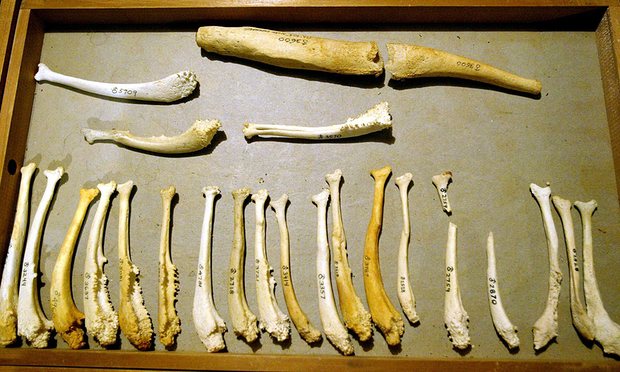
It can be as long as a finger in a monkey. In the walrus, it can be two feet long. But the human male has lost it completely. And researchers are a little stumped.
Known as the baculum to scientists with an interest, the penis bone is a marvel of evolution. It pops up in mammals and primates around the world, but varies so much in terms of length and whether it is present at all, that it is described as the most diverse bone ever to exist.
Prompted by the extraordinary differences in penis bone length found in the animal kingdom, scientists set out to reconstruct the evolutionary story of the baculum, by tracing its appearance in mammals and primates throughout history.
They found that the penis bone evolved in mammals more than 95 million years ago and was present in the first primates that emerged about 50 million years ago. From that moment on, the baculum became larger in some animals and smaller in others. The stump-tailed macaque, an animal that weighs only 10kg, has an extremely long baculum for its size, with the bone extending for 5cm. The bone is five times the size of the baculum in the collared mangabey, which is a slightly larger monkey.
Kit Opie who led the study at University College London, said that penis bone length was longer in males that engaged in what he called “prolonged intromission.” In plain English, that means that the act of penetration lasts for more than three minutes, a strategy that helps the male impregnate the female while keeping her away from competing males. The penis bone, which attaches at the tip of the penis rather than the base, provides structural support for male animals that engage in prolonged intromission.
In chimps, the penis bone is no longer than a human fingernail. The tininess of the bone correlates with the very short spell that the male spends mating, in the order of seven seconds. In chimpanzee groups, females mate with all the males, in what appears to be a strategy to reduce the risk of her children being killed by older males. “It gives each male an idea that they may have fathered the subsequent offspring, and it is in her interests to get that done quickly,” Opie said.
Humans may have lost their penis bones when monogamy emerged as the dominant reproductive strategy during the time of Homo erectus about 1.9 million years ago, the scientists believe. In monogamous relationships, the male does not need to spend a long time penetrating the female, because she is not likely to be leapt upon by other amorous males. That, at least, is the theory.
“We think that is when the human baculum would have disappeared because the mating system changed at that point,” Opie said. “This may have been the final nail in the coffin for the already diminished baculum, which was then lost in ancestral humans.” Details of the research are published in Proceedings of the Royal Society.
“With the reduced competition for mates, you are less likely to need a baculum,” he added. “Despite what we might want to think, we are actually one of the species that comes in below the three minute cut-off where these things come in handy.”
END

Be the first to comment